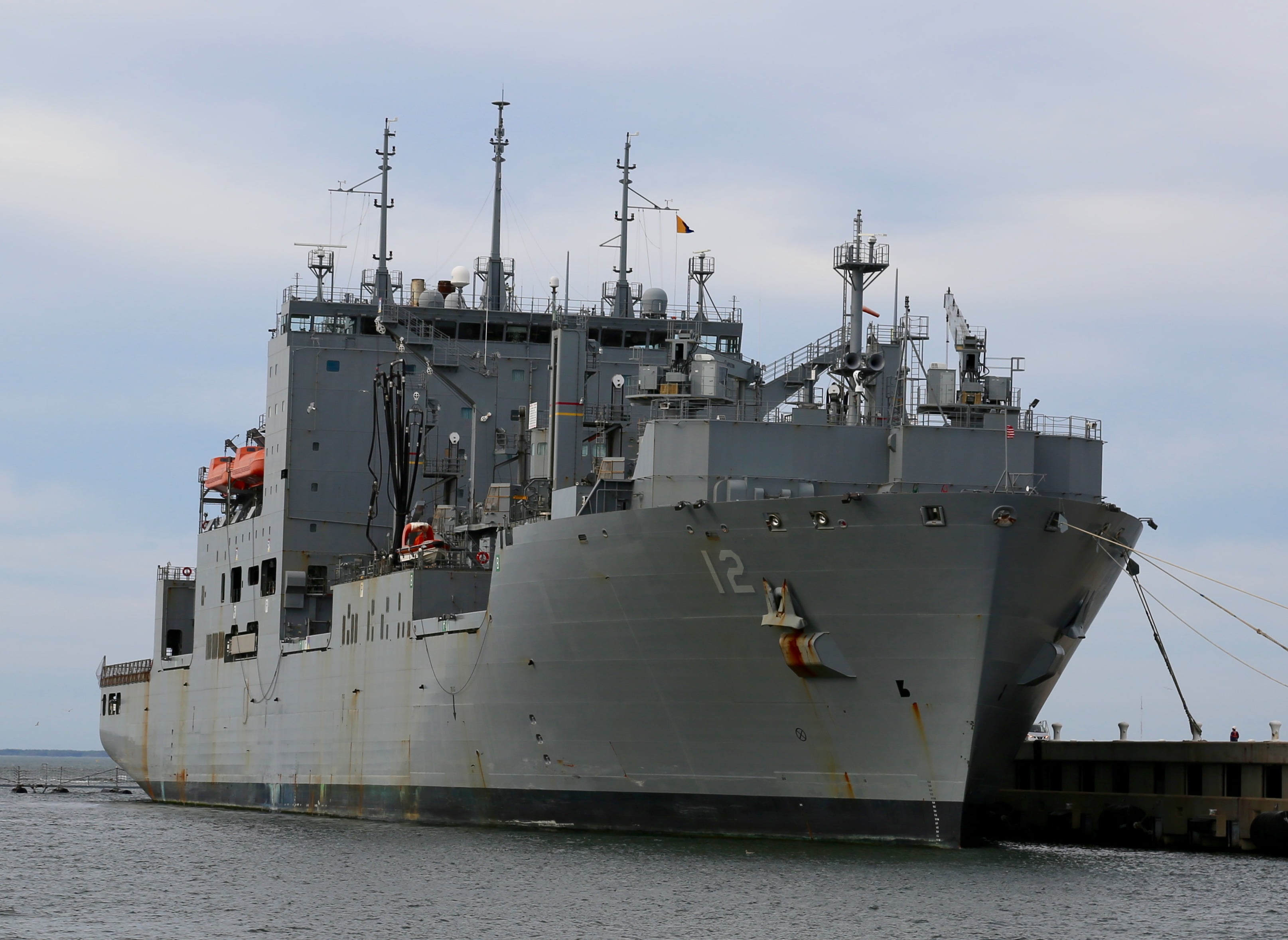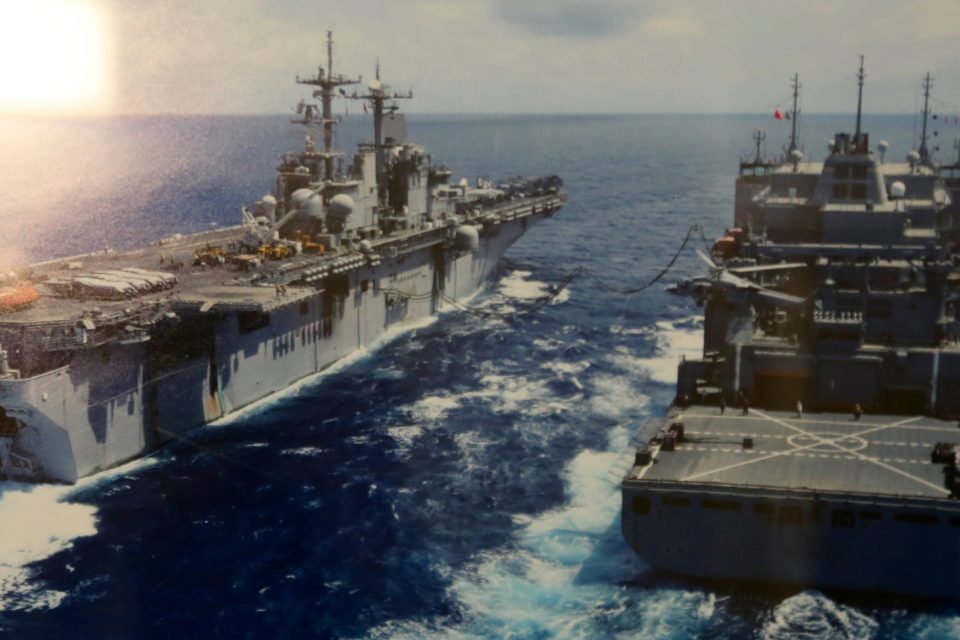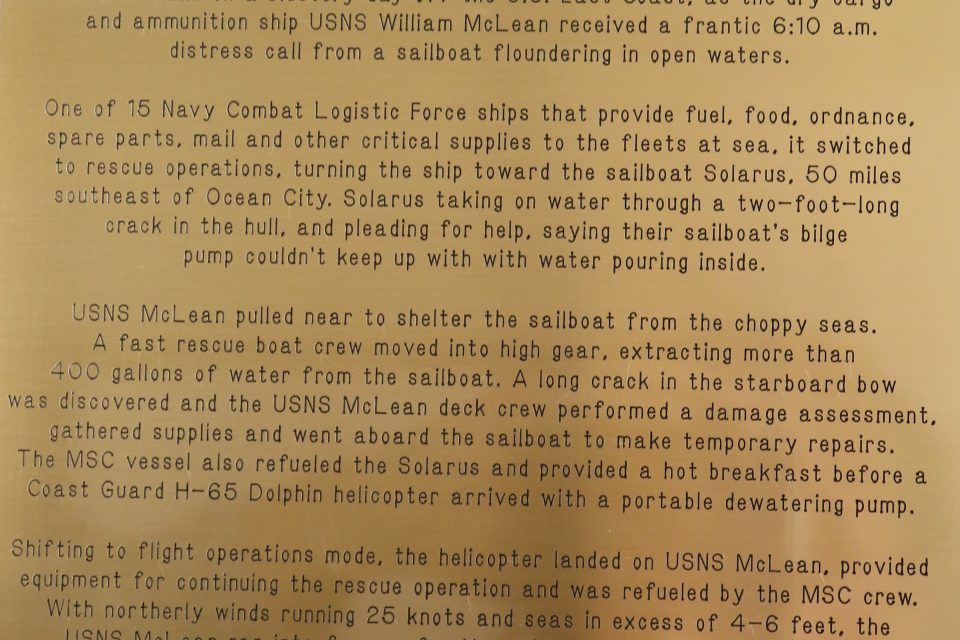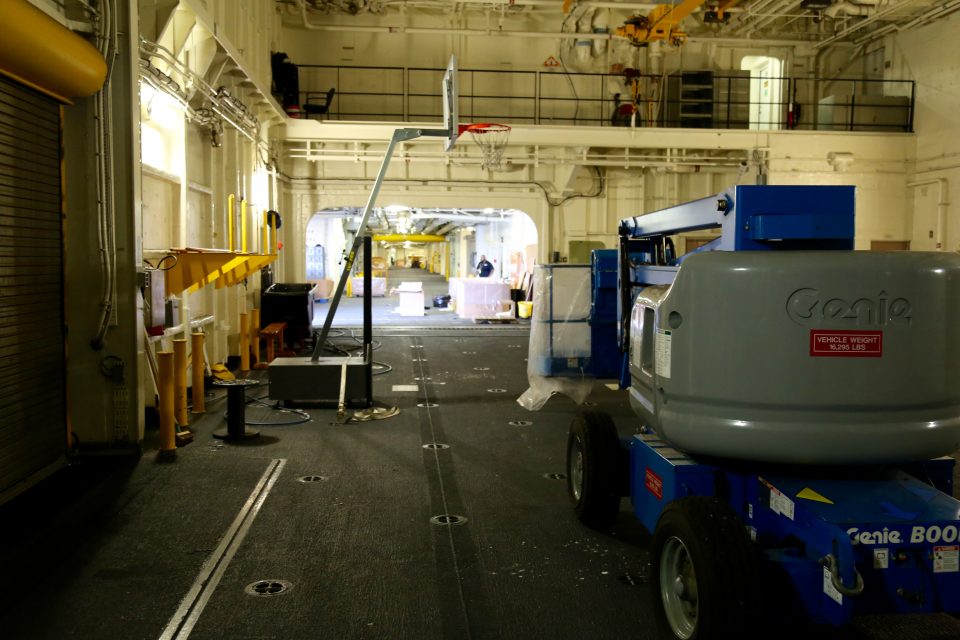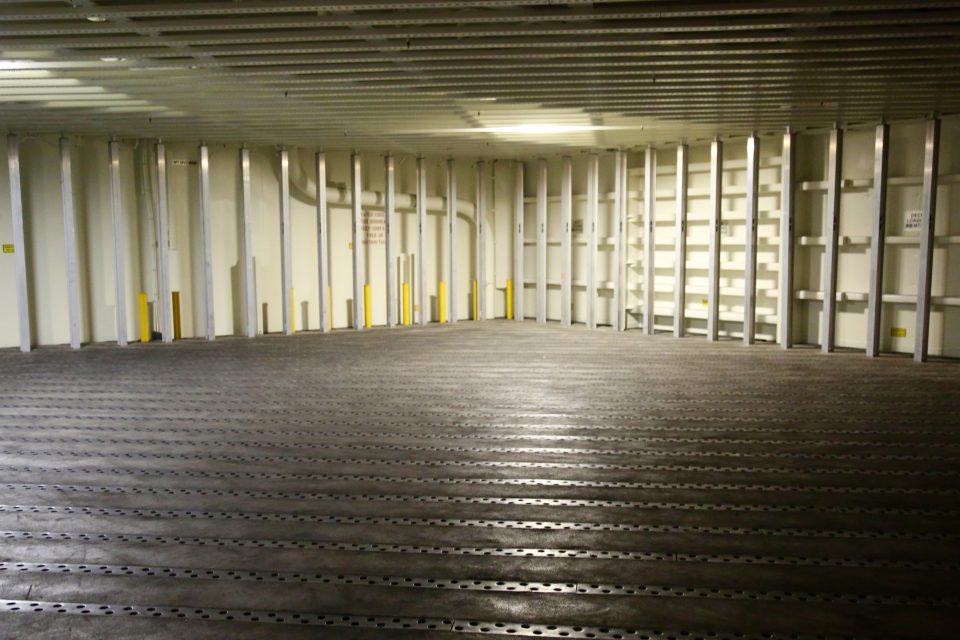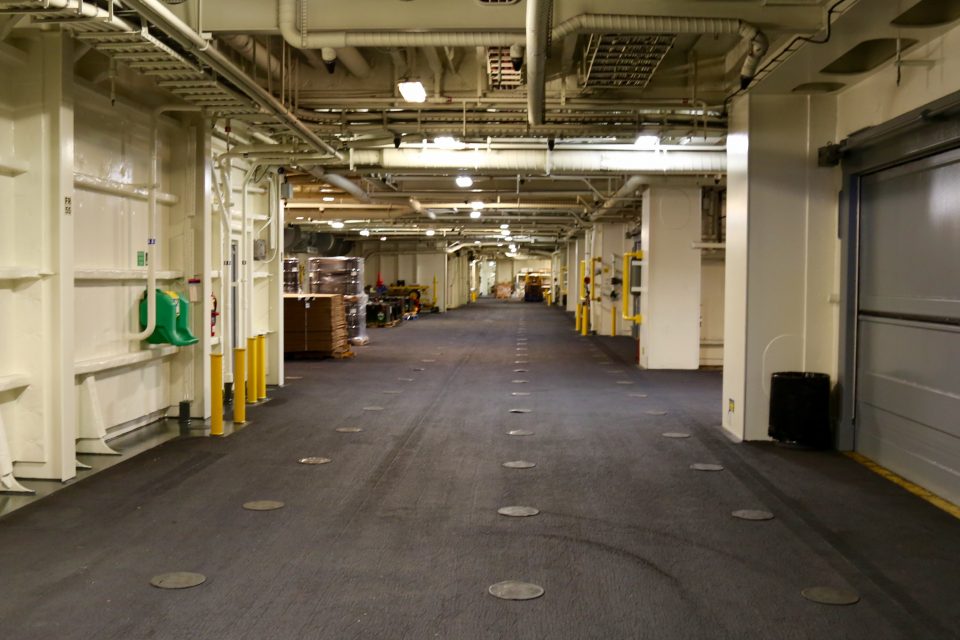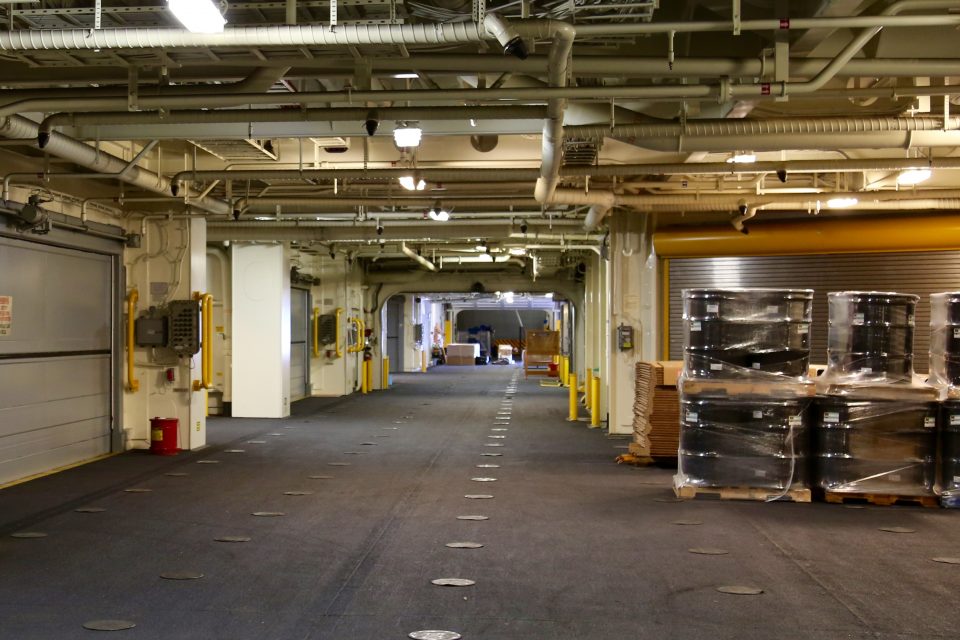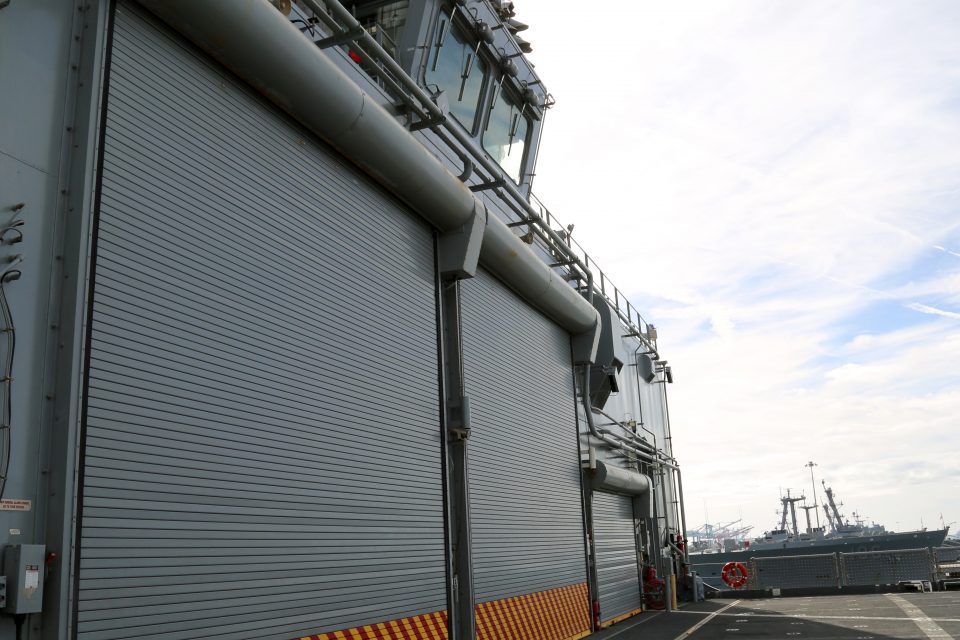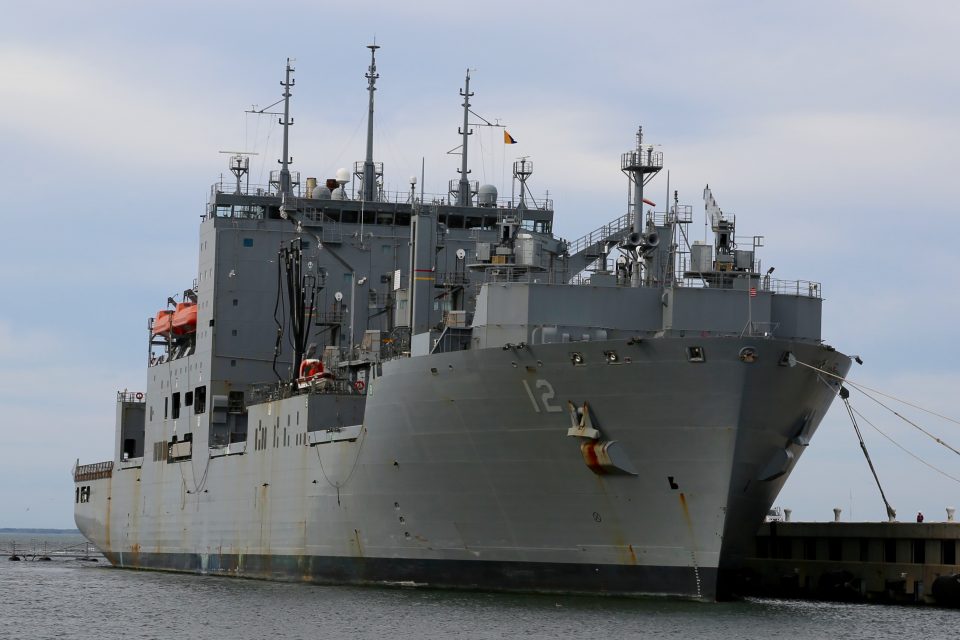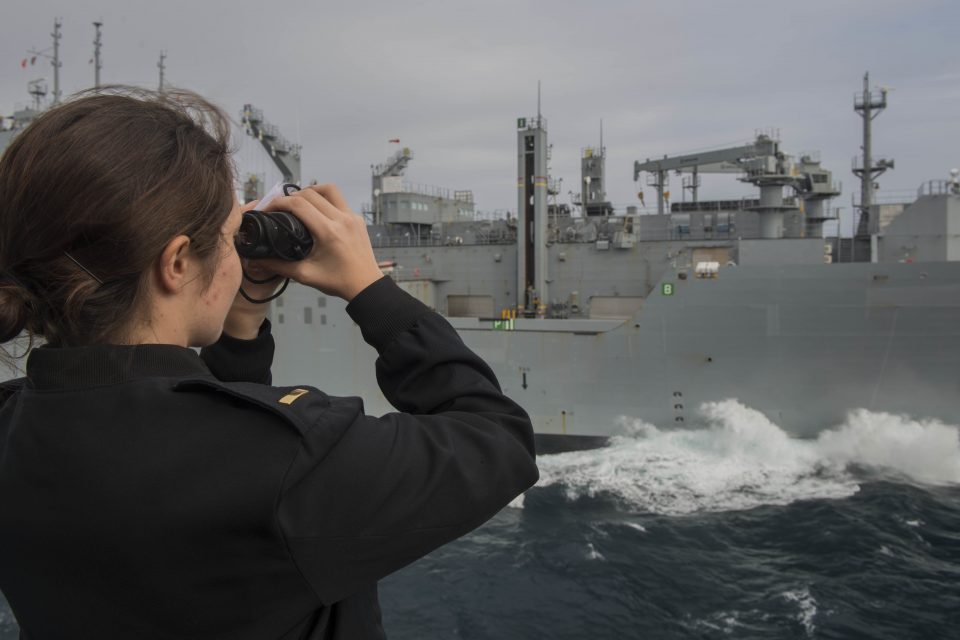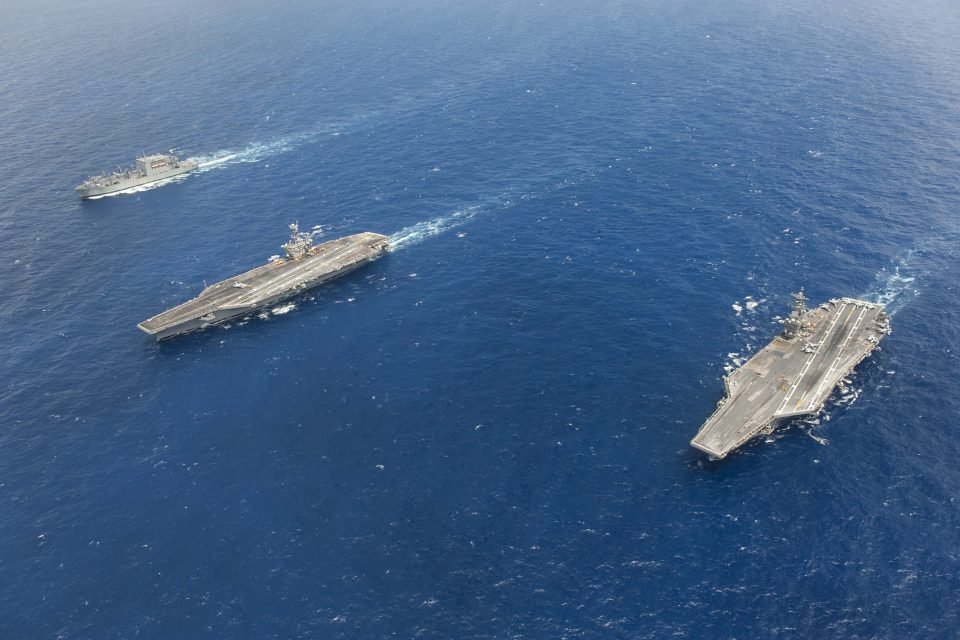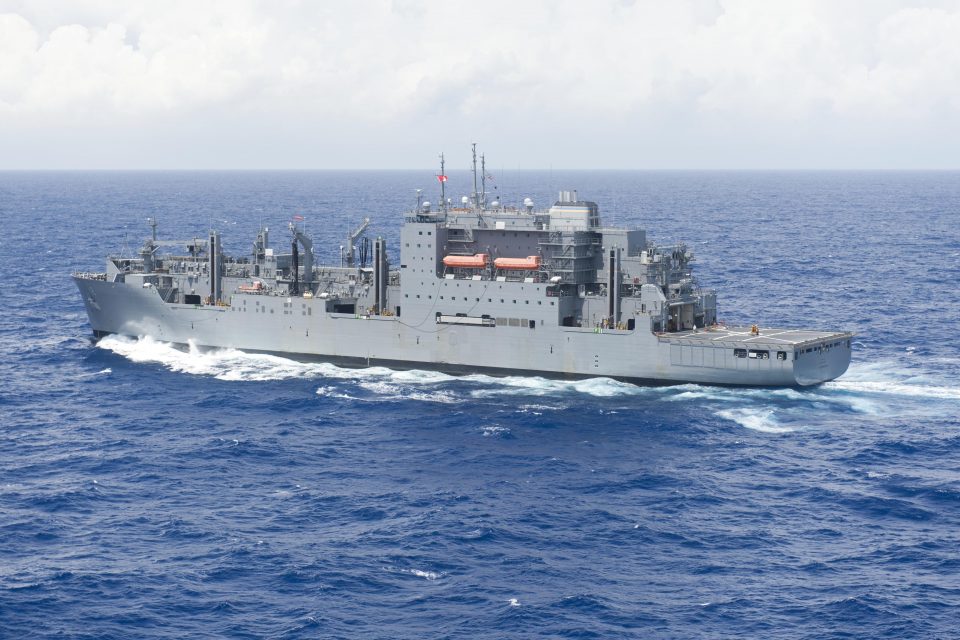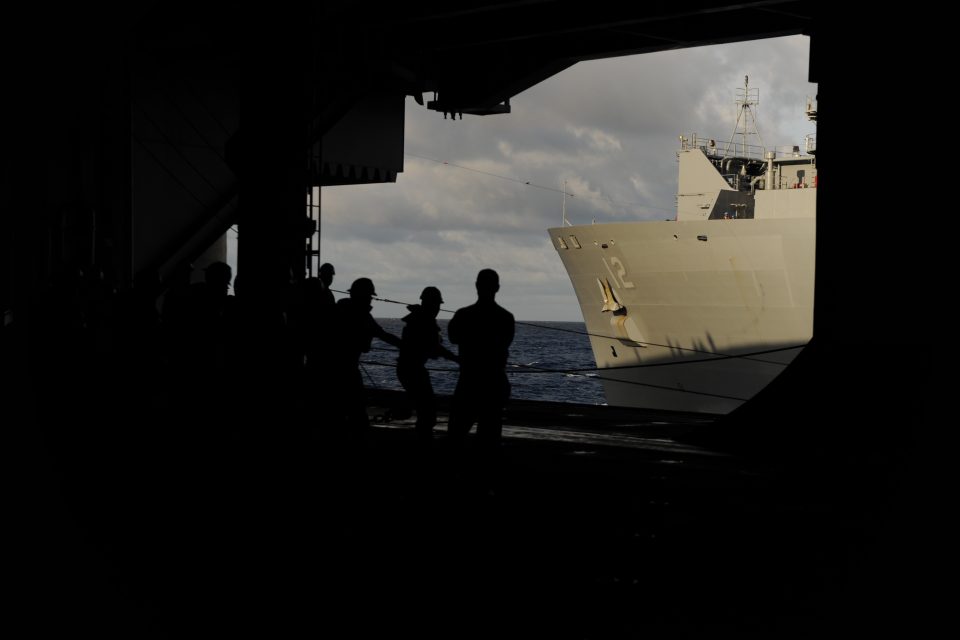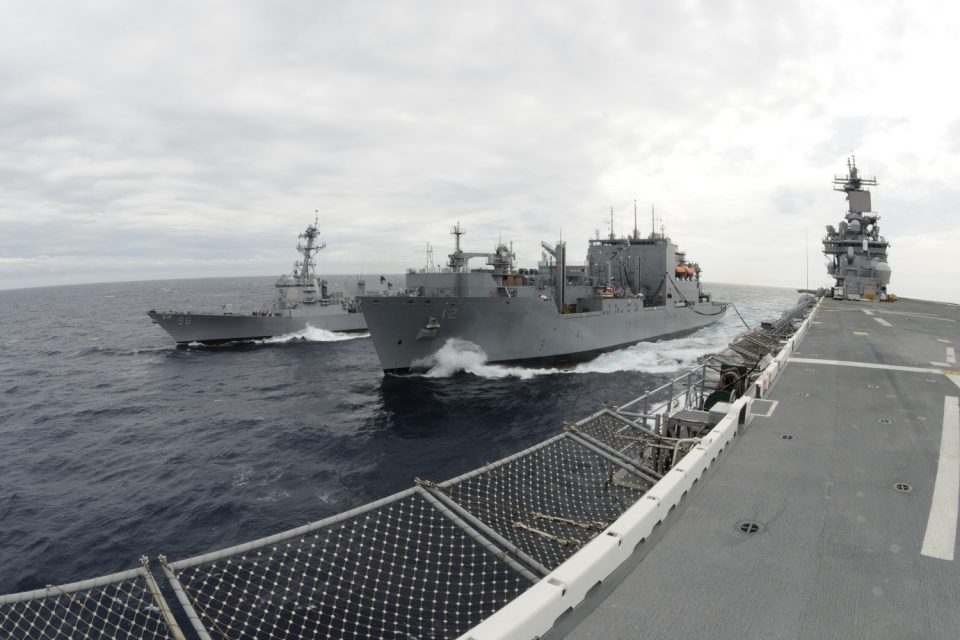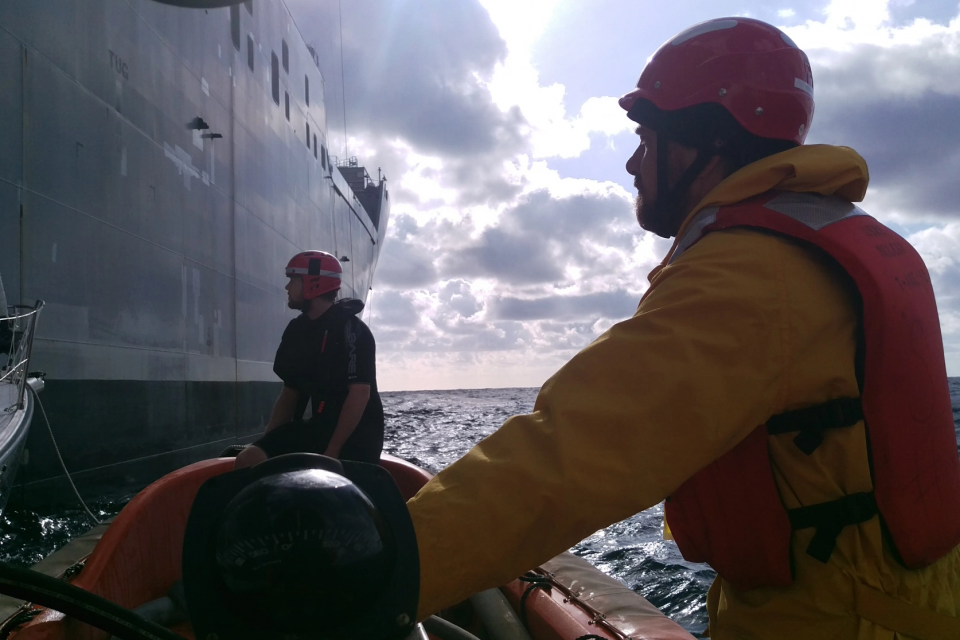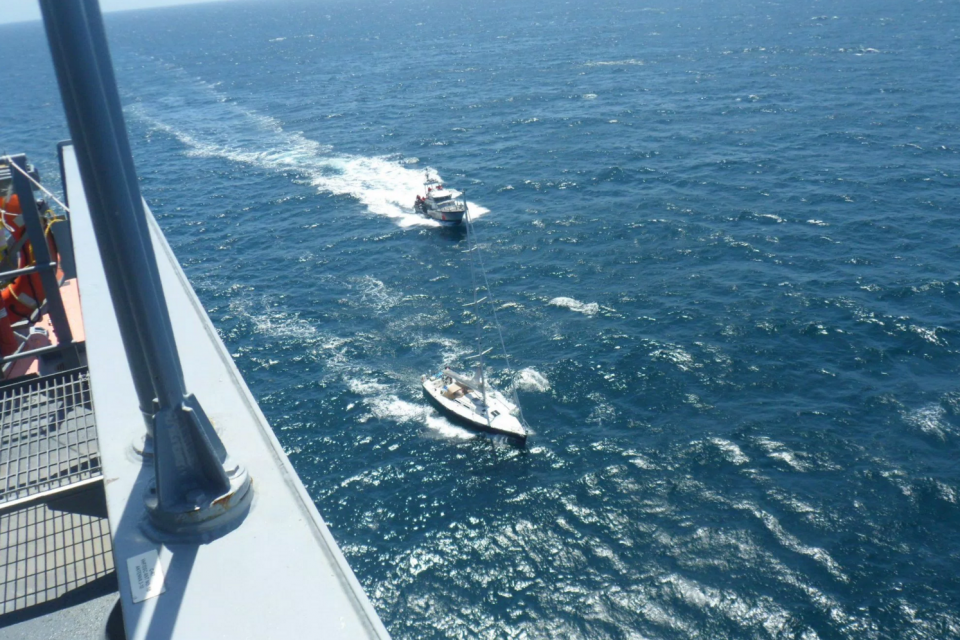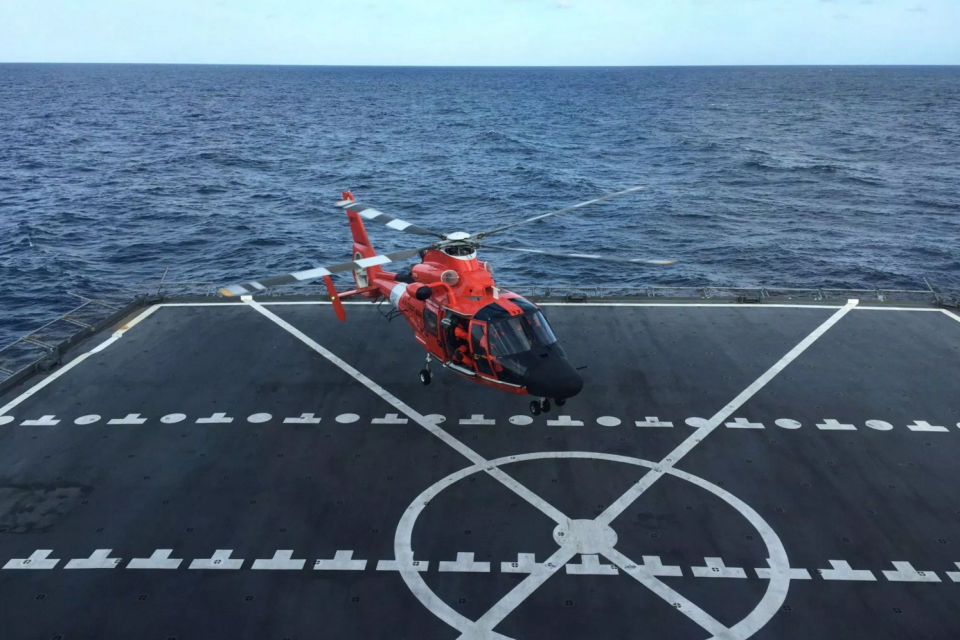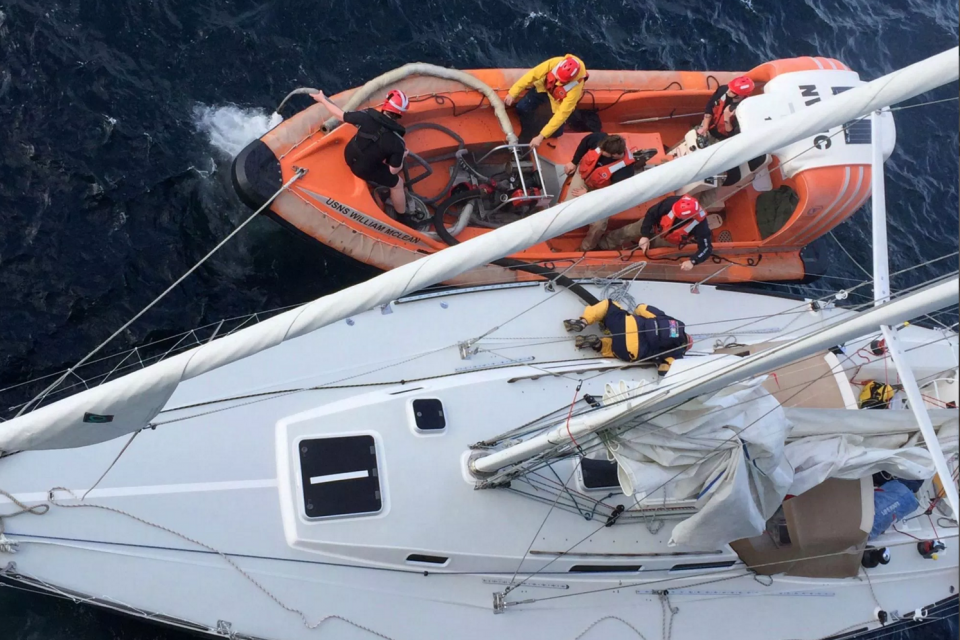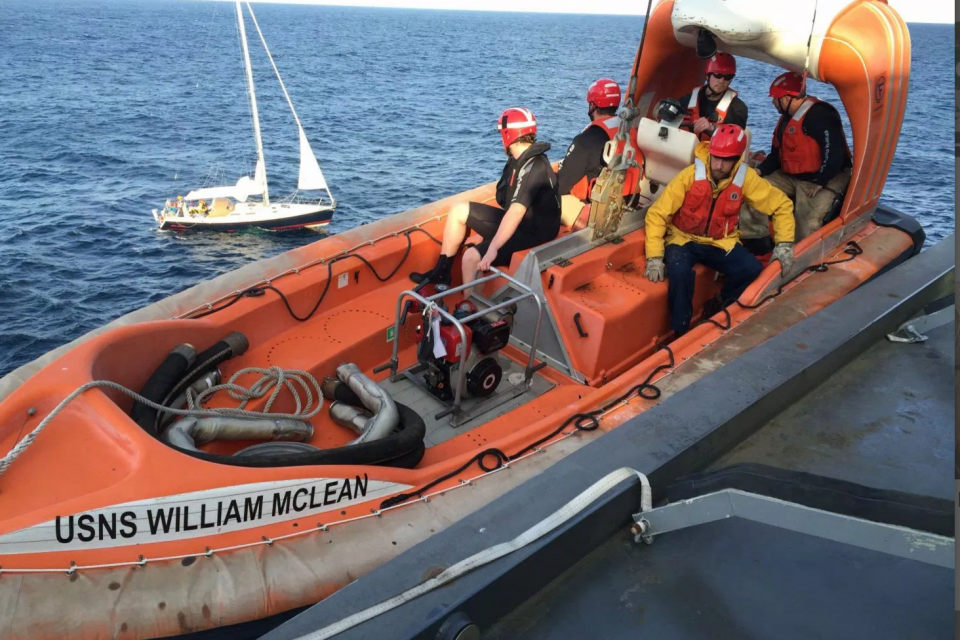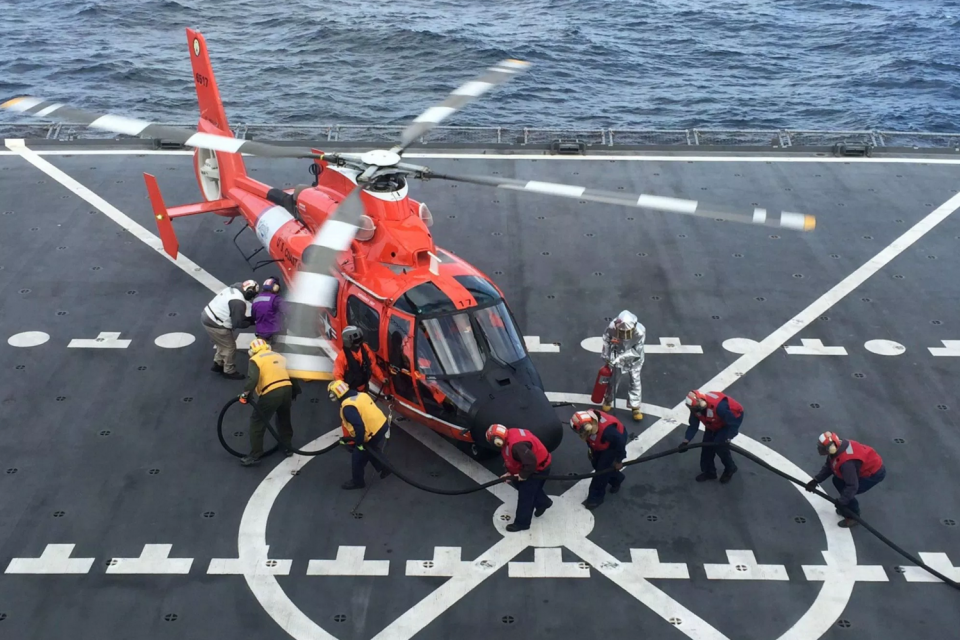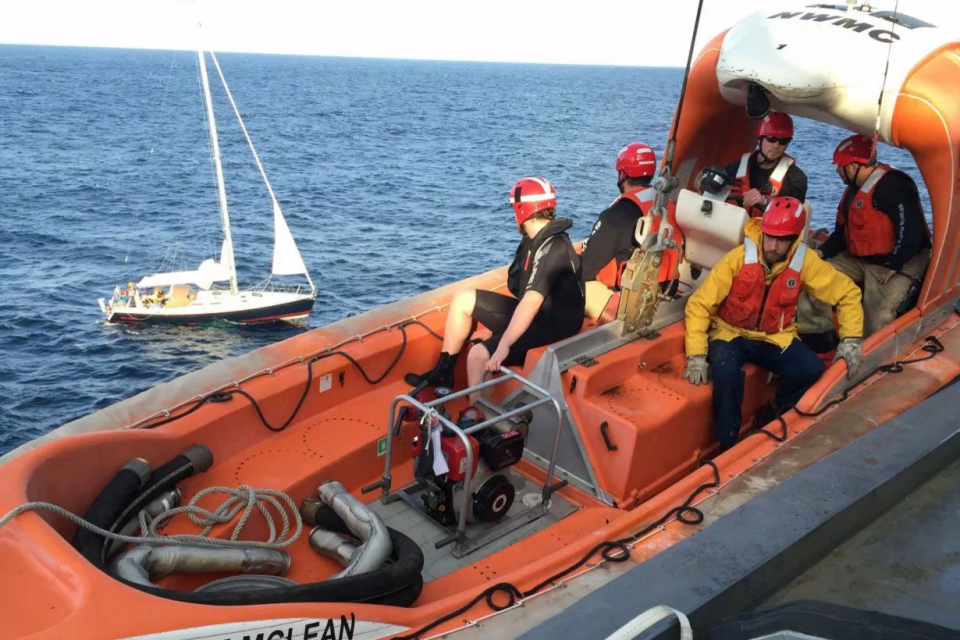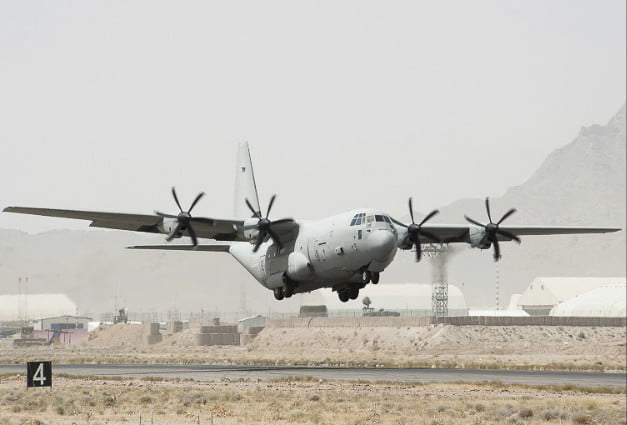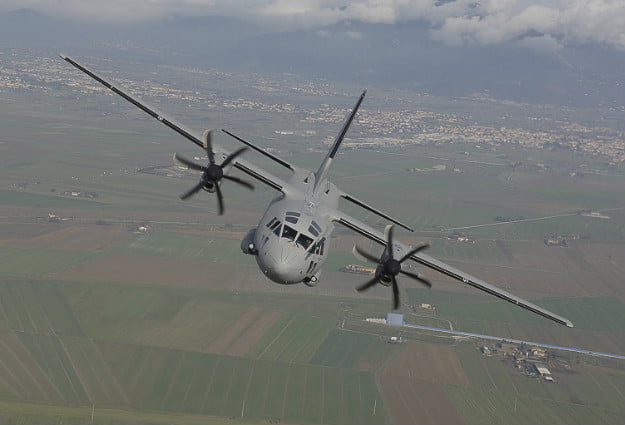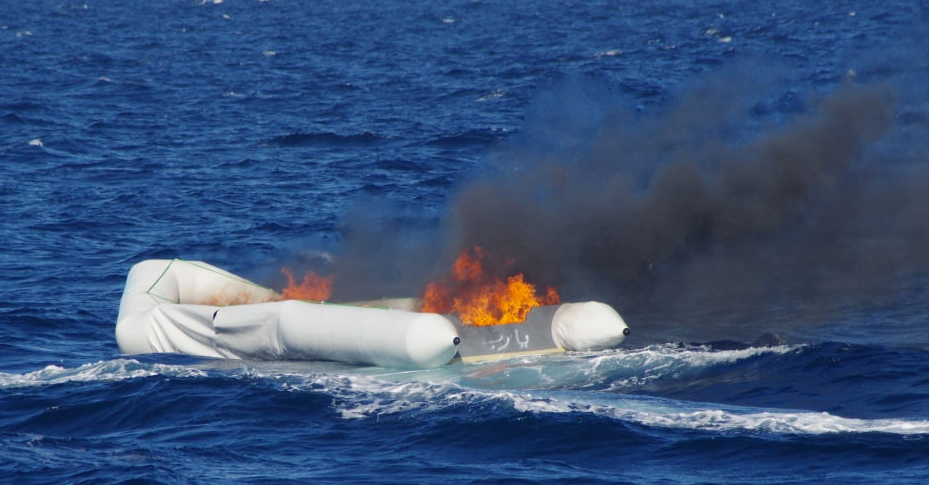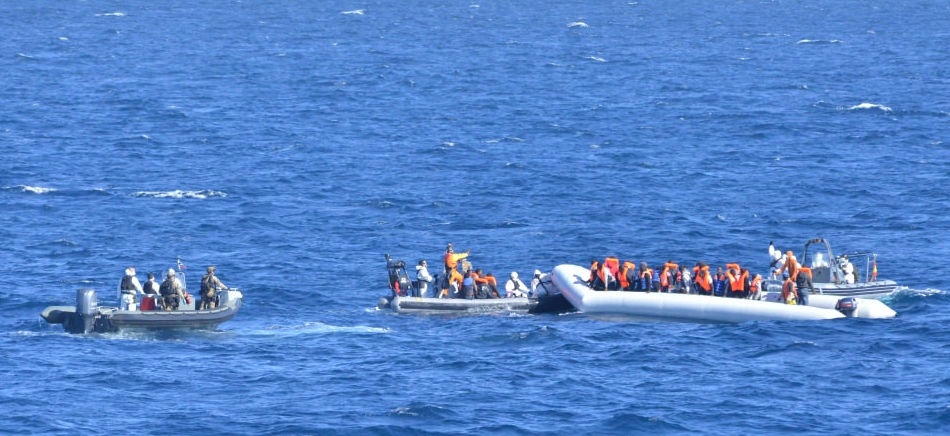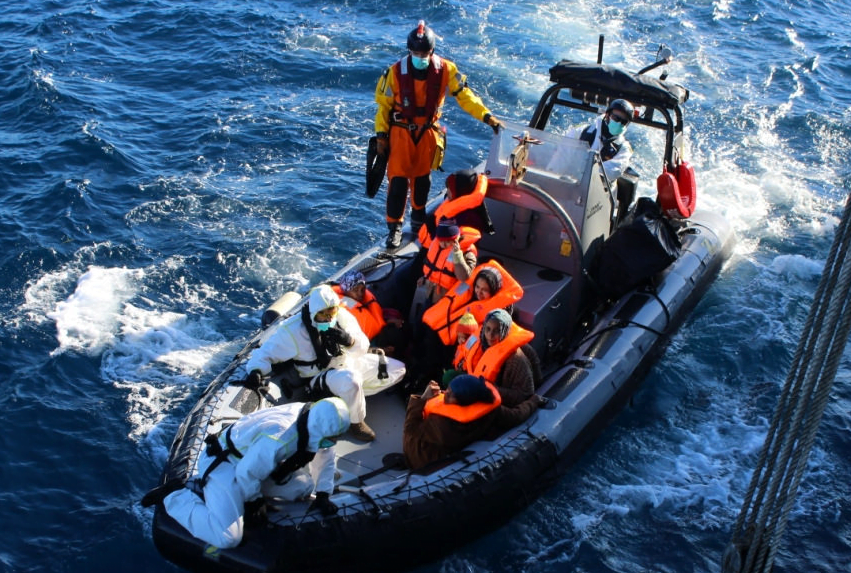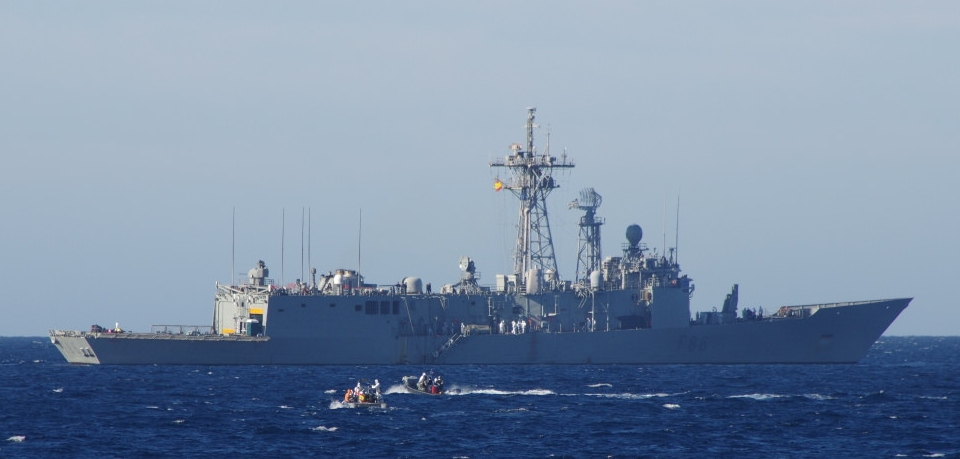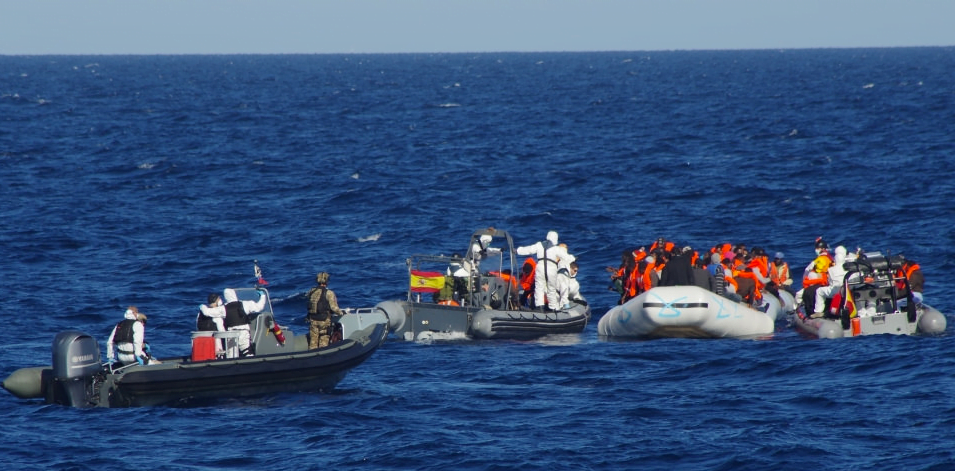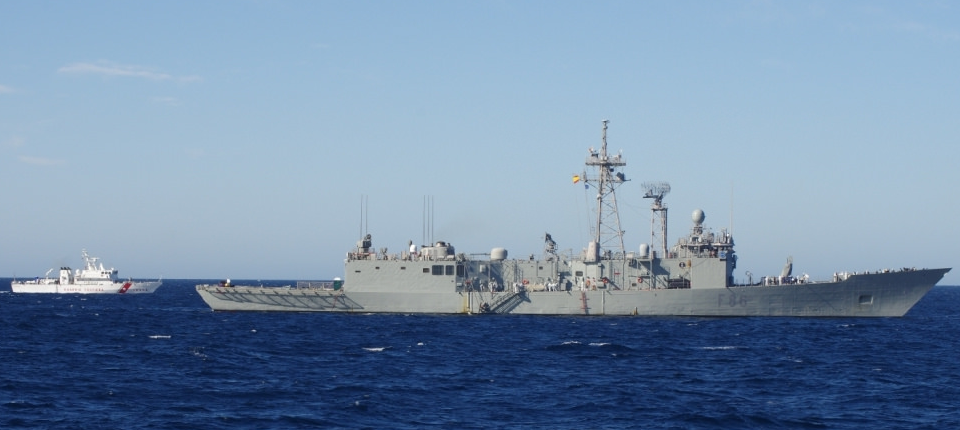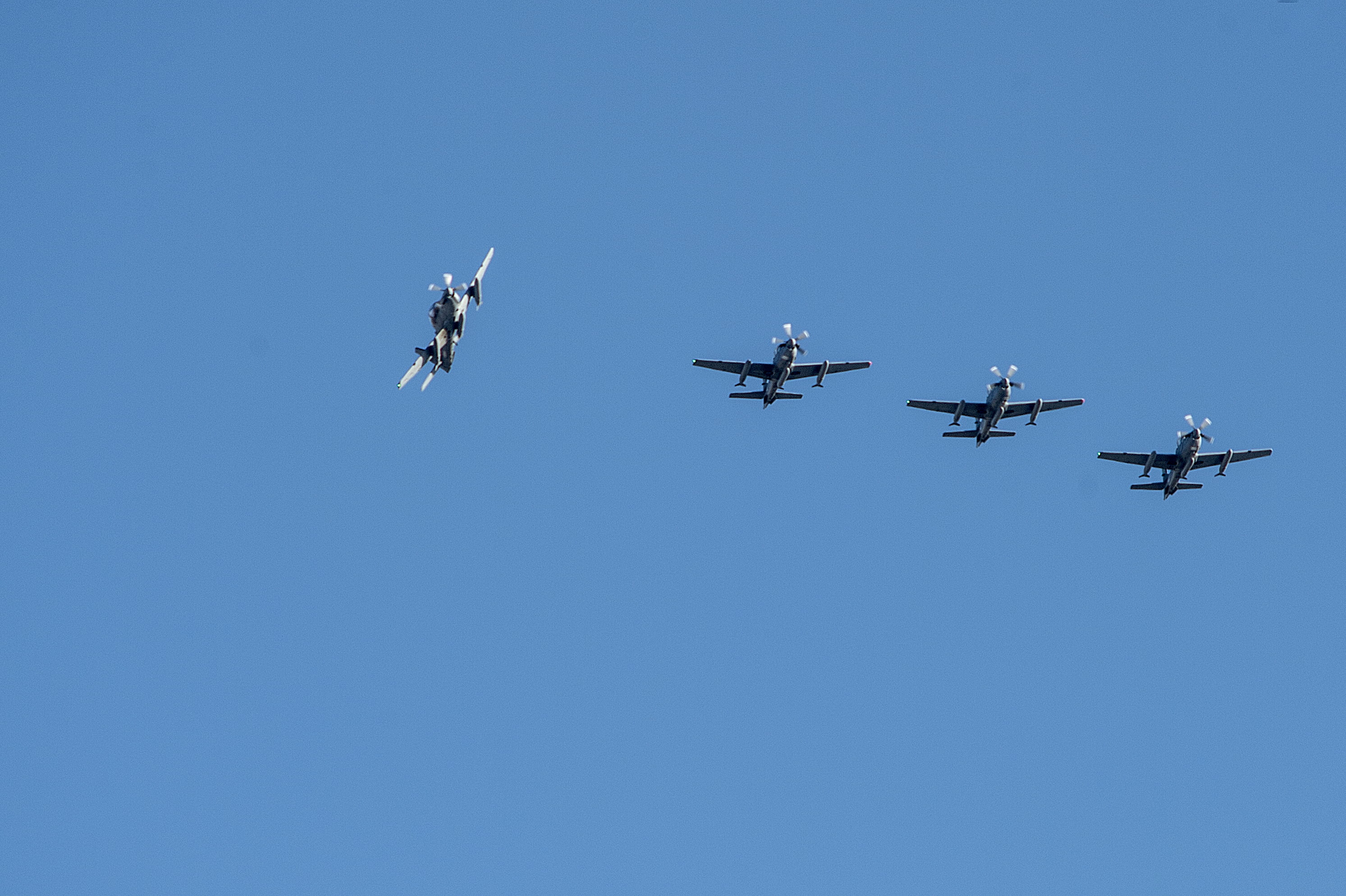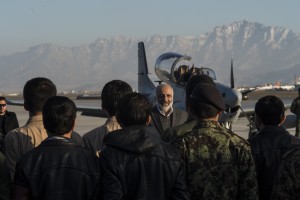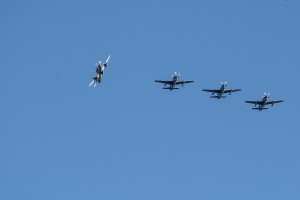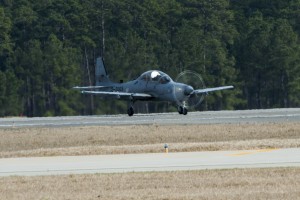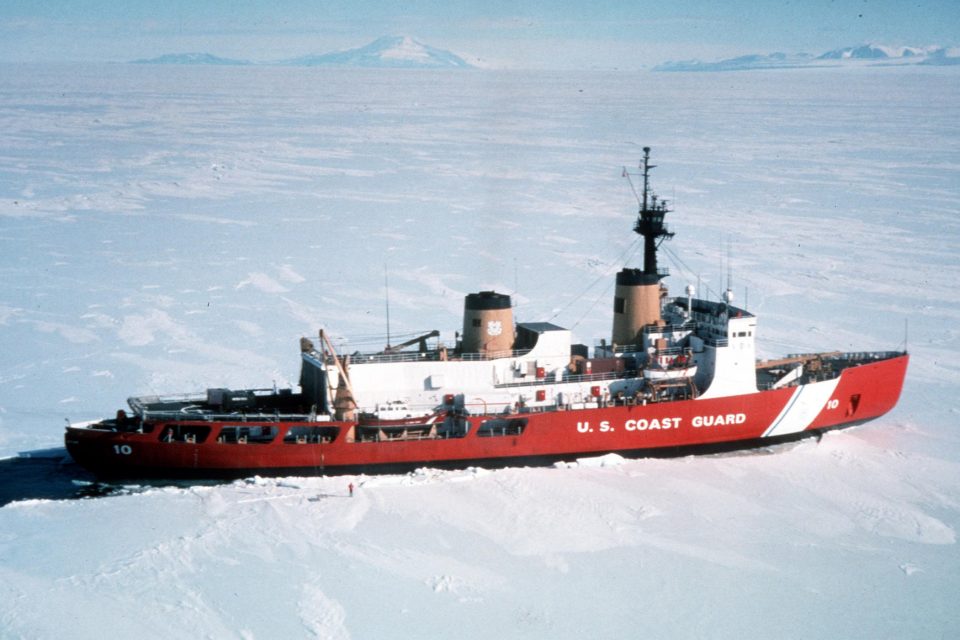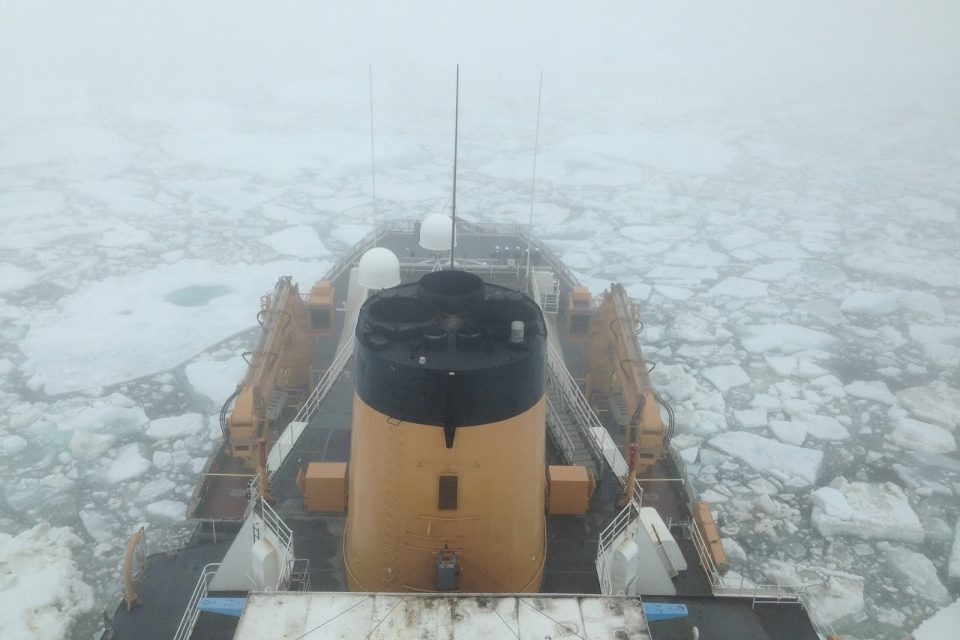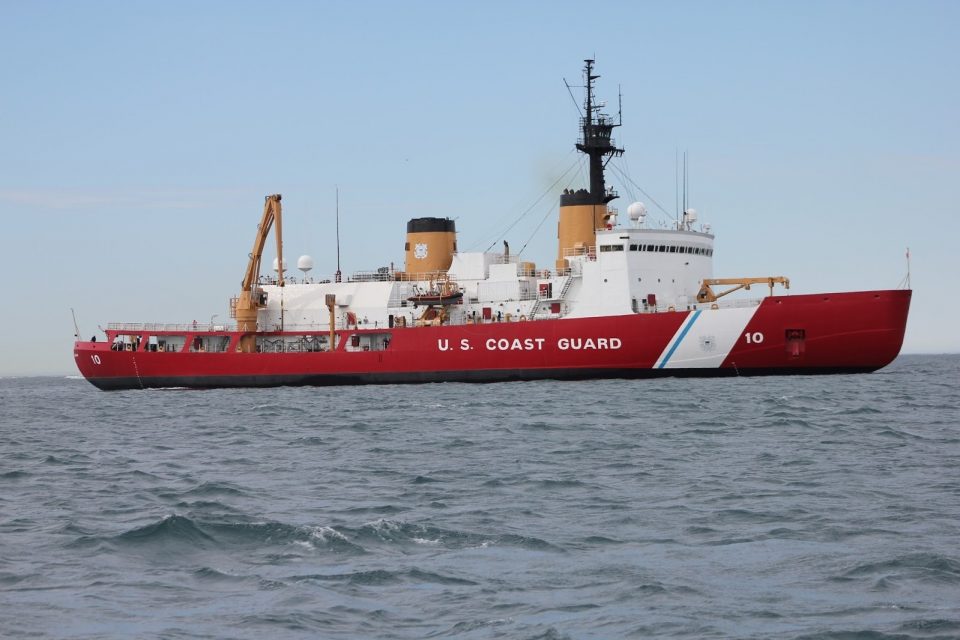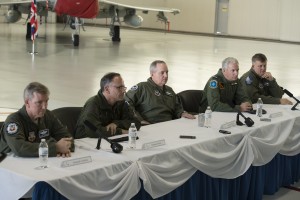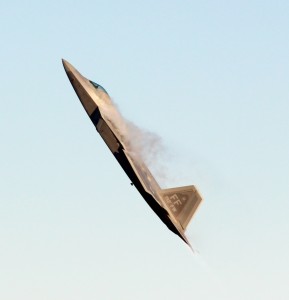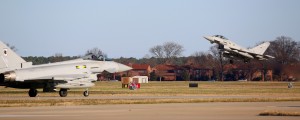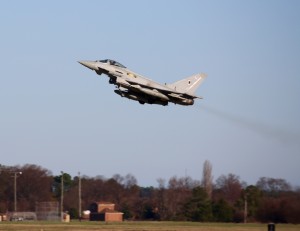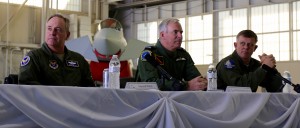2016-01-19 By Robbin Laird, Ed Timperlake, and Murielle Delaporte
We have visited the T-AKE ship before, and have been impressed with the ship, particularly what it can deliver for around $400 million.
The final two ships were funded at $825 million which would make the per ship cost around 412 million.
As a point of comparison in the most recent Congressional Research Report (December 15, 2015) the LCS price is $479 Million.
The ship has been designed to provide flexible, blue water support in any Ocean of the world to the fleet with significant cargo space, including ammunition support, elevators to enable the crew to move cargo to the delivery to the point of support, and with the use of modern logistical IT methods can find the cargo in its location aboard a ship with significant cargo space.
The MSC T-AKE ship fleet consists of 14 ships, and the master of the dry cargo & ammunition ship USNS William McLean (T-AKE 12) is Capt. James White.
Given the shortage of ships for the USCG and the US Navy, the ship has been tasked to do a diversity of missions far beyond simple fleet replenishment.
- Given the high demand on the tanker fleet, T-AKE ships can play a tanking role.
- The Marines have used it as mini-amphibious support ship in the Pacific.
- And with its helo deck has landed Ospreys and there is under consideration the possibility of modifying the two-hanger arrangement for helos to be modified for the Osprey itself. For the distributed operational fleet, it makes sense to rely on the Osprey as a significant operational connector.
- It can support either military helicopters for fleet replenishment at sea or commercial helicopters for other mission sets.
Recently, we visited the USNS William McLean (T-AKE12) in Norfolk, Va. during our visit to Military Sealift Command.
USNS William McLean is a Lewis and Clark-class dry cargo ship of the United States Navy, named in honor of William McLean, a United States Navy physicist, who conceived and developed the heat-seeking AIM-9 Sidewinder missile.
The contract to build William McLean was awarded to National Steel and Shipbuilding Company on December 12, 2008.
The USNS William McLean was launched on April 16, 2011, sponsored by Dr. McLean’s niece, Margaret Taylor. The ship was delivered to MSC on September 28, 2011.
We toured the ship and discussed its recent operations with the ship’s skipper.
During the tour we discussed two events, which highlighted the engagement of the ship.
First, we passed a photo of the ship providing replenishment at sea to one of the amphibious ships involved in the rescue of Captain Phillips from the pirates that attacked his ship the Maersk Alabama.
The William McLean’s contribution to keeping Navy ships on station, roughly 7,000 miles from Norfolk, Va. during the Captain Phillips rescue operation, can be seen in the lifeboat on the deck of the USS Boxer.
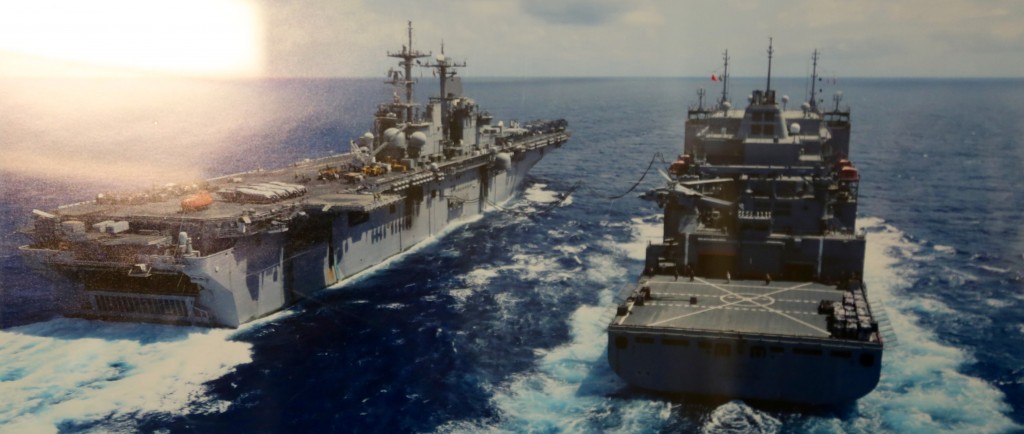
The second event highlighted the role of the captain and crew in exercising their at-sea duties.
Here a sinking sailboat operating in open waters.
Not only did the ship save the sailboat and its crew, but facilitated its repair at sea and then ability to return to shore.
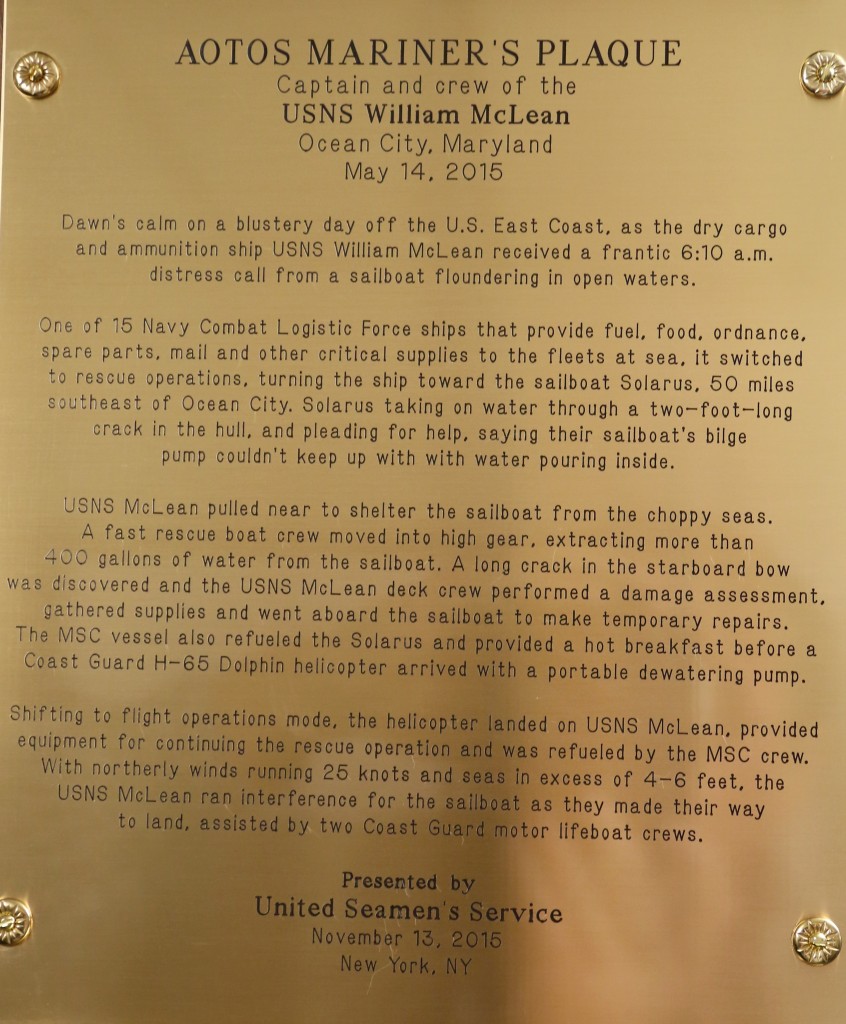
The tour highlighted the flexibility of the ship in terms of its substantial reconfigurable cargo bays, which are designed as well to hold ammunition for resupply to deployed forces.
The total displacement of the ship is 41,000 tons; the dry cargo capacity is 6,675t; there are two cargo potable water tanks with a capacity of 200t or 52,800gals.
The ship can also provide fuel and is used regularly to do so as a complement to the MSC tanker fleet.
Whereas the single hull tankers can hold 180,000 barrels of oil, the T-AKE ship has a more modest capability, of 3,242t of fuel.
Question: How many mariners are there onboard your ship?
How many military?
Captain: We have 121 civil service mariners and have military onboard only for a security detail when needed.
Question: What has been your most recent engagement?
Captain: Our most recent trip was in support of Joint Warrior 15-2 and At Sea Demonstration 15.
We went across the Atlantic with a Canadian task group under the command of a Canadian admiral plus the USS The Sullivans.
Our major task was providing fuel during the transit as the Canadian navy has no current tanking support.
None of their oilers are working right now.
They have two oilers that are decommissioned basically.
The Canadians were operating two frigates and a destroyer, namely the Halifax, Montreal and the Athabaska.
Question: We assume that the Canadians visited your ship.
What was their reaction?
Captain: They did and had a very positive reaction to the ship.
During lunch, we discussed earlier operations and it turns out I had refueled the Admiral’s ship earlier when he was the captain of the Winnipeg off of Somalia and when I was the captain of USNS Lewis and Clark.
I have a collection of Canadian navy caps over by my desk and have worked with 8 of the 12 Halifax frigates. I am working to get caps for all 12!
We were the only oiler in support of Joint Warrior.
Another oiler wasn’t able to come for some reason.
So we did 45 UNREPs in 52 days. So we’re very busy. We pumped a lot of fuel.
Question: Could you speak about the level of sea states in which you can operate to perform your mission?
Captain: We can UNREP safely up to 10 to 12 foot seas.
With 14 to 18 foot seas we are not going to be UNREPing under those conditions.
Question: When working with allied ships, how does the signaling and coordination work?
Captain: All of the UNREP signaling and the equipment is mostly standardized now.
And we will send a battery-operated walkie-talkie to the ships we are working with, and English is the common language.
Although we have crew members who speak Spanish and can do so with relevant allied crews, such as the Spanish Navy.
And during the recent exercise, we did an UNREP with a Polish Navy ship, and we certainly do not speak Polish!
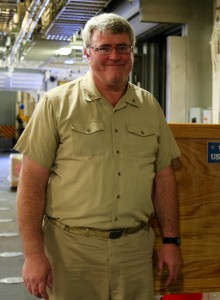
Question: You do emergency breakaways as well when conditions worsen, we would assume?
Captain: We do, and did so on the recent exercise with a French ship.
We were operating in 12-14 foot seas, and a wave broke up on the deck of the French ship knocking some French sailors about.
The French captain decided to terminate the refueling effort and we broke off from the French ship.
Question: How were you operating at the time?
Captain: We were operating in a 12-foot sea about 160 feet from the French ship and going about 13 knots.
Question: How do you refuel for your at sea fueling mission?
Captain: We either go to port to receive fuel or receive fuel from an oil tanker. We have two fuel receivers, which we use to receive fuel.
On the recent exercise, we refueled three times at the Loch Striven NATO fuel depot. And we took a load of fuel from the RFA Wave Knight.
Question: In the refueling role, you extend the range of the tanker fleet, and presumably can go into some areas more difficult for a larger oil tanker to operate as well?
Captain: We can and do.
We can take fuel from a tanker then go someplace else to support other ships.
And then the tanker can go do something else. So we multiply the effect from the tanker fleet.
Question: On the exercise, which NATO navies did you support beyond the US, the Canadians, the French and the Polish?
Captain: The Portuguese Navy, the Dutch Navy, the German Navy and the Royal Navy.
Question: What is the overall reaction to you as an asset for the US and allied navies?
Captain: We are very flexible and capable support ship.
The ship is very capable.
It is it is extremely capable of moving dry cargo at sea.
It a couple of orders of magnitude better than what we’ve replaced. With the fuel capability, we have a million gallons so we’re not an oiler.
An oiler carries about 7 million.
But we have functioned frequently as an oiler.
I frequently hear: “Oh, I wish you guys had more fuel. I wish you carried more cargo fuel.”
But the, the ship was not built as an oiler. It’s built as a dry cargo ship. The ship does carry several times more fuel than the older ships we’ve replaced.
Editor’s Note: The versatility of the T-AKE ship is highlighted in the following story published on November 4, 2015:
By Grady T. Fontana, Military Sealift Command Far East
LUGANVILLE, Republic of Vanuatu (NNS) — The U.S. Ambassador to Vanuatu Walter E. North attended Exercise KOA MOANA 15-3 Vanuatu opening ceremony at the Vanuatu Police Force here, Nov. 4.
“The waters of the South Pacific are home to some of the riches areas of marine biodiversity and fishery resources, but their vast expanse makes them difficult to patrol and police,” said Ambassador North, who is also U.S. ambassador to Papua New Guinea and Solomon Islands. “Protecting these waterways for sustainable use and legal use by all parties is not only in the interest of Vanuatu, it’s in the interest of the United States.”
Military Sealift Command’s dry cargo and ammunition ship USNS Lewis and Clark (T-AKE 1) anchored off the coast of Vanuatu and offloaded Marines and equipment yesterday as part of her continuing support of the exercise.
In Vanuatu, the Marines will continue with their military-to-law enforcement engagements, while members of the Navy and Coast Guard will concurrently participate in Oceania Maritime Security Initiative (OMSI) operations, just as they did in Fiji and Kiribati, along with their host nation partners.
“As a signal of our enduring commitment to the Pacific, this exercise, with about 120 U.S. Marines, joining their colleagues from the U.S. Navy and U.S. Coast Guard, and in partnership with the Vanuatu authorities, will conduct operation to help combat transnational crime within Vanuatu’s exclusive economic zone,” said the ambassador. “The combined teams will look for potential violations and board vessels for further inspection.”
The first portion of the exercise was in the Tahiti in September, followed by legs in Fiji and Kiribati in October where Marines conducted theater security cooperation (TSC) activities with those host nation partners.
After Vanuatu, Lewis and Clark, which is also part of Maritime Prepositioning Ships Squadron TWO (MPSRON-2), will carry her personnel and cargo to Timor Leste for more TSC events, then return to her home port in Diego Garcia early December.
“The KOA MOANA exercise is looking at security force relations to expose our Marine Corps, Navy, and Coast Guard elements, in this very interesting environment, to see how we might improve our capacity to work together [with host nations] in natural disasters, to combat transnational crime and other illegal activities like unregulated and unreported fishing by bolstering law enforcement programs through on-shore training and potential boarding of commercial vessels nearby, said North.”
During the OMSI operations in Kiribati, the combined Tarawa Maritime Police unit and U.S. Coast Guard enforcement officers boarded nine fishing vessels. Of those nine, the Tarawa Maritime Police unit identified five boats with violations.
Those violations ranged from boats not having proper documentation or licenses to fish in the Kiribati exclusive economic zone, to vessels not having seabird or turtle mitigation measures on board.
OMSI is a secretary of defense program aimed to diminish transnational illegal activity on the high seas and enhance regional security and interoperability with partner nations.
Exercise KM 15-3 is a four-month international exercise with participants from the U.S. Marine Corps, U.S. Navy, U.S. Coast Guard and host nation participants from various countries in the Pacific Island Nations of Oceania.
COMPSRON 2, currently embarked in USNS Lewis and Clark and operating in the Southern Eastern Pacific, maintains tactical control of the 10 ships that are forward deployed to Diego Garcia and carrying afloat prepositioned U.S. military cargo for the U.S. Marine Corps, the U.S. Army, and the U.S. Air Force. The squadron’s mission is to enable the force from the sea by providing swift and effective transportation of vital equipment and supplies for designated operations.
MSC operates approximately 115 non-combatant, civilian-crewed ships that replenish U.S. Navy ships, conduct specialized missions, strategically preposition combat cargo at sea around the world and move military cargo and supplies used by deployed U.S. forces and coalition partners.
According to Naval-Technology.com, the T-AKE ship has the following capacities:
The dry cargo capacity is 6,675t. There are two cargo potable water tanks with a capacity of 200t or 52,800gal. The five cargo fuel tanks can carry 3,242t of fuel.
The ship is constructed with two multipurpose cargo holds for dry stores and ammunition, three specialty cargo and spares holds, and specialty cargo spaces on level 01.
A lightweight portable cargo dunnage system is used in the holds to protect the cargo from mechanical and water damage. There is a dedicated cargo hold for frozen, chilled or dry stores. The cargo holds are air conditioned.
There are also extensive cargo pre-staging areas on the main deck, four cranes each rated at 5t for loading and offloading pierside or at anchorage, and eight cargo elevators for transferring the cargo between the main deck and the allocated stowage locations.
Each Lewis and Clark ship is capable of simultaneous operation of five connected replenishment (CONREP) stations and vertical replenishment (VERTREP) operation by aircraft, using the flight deck situated on the main deck. There is a total of three dry-cargo and one liquid-cargo connected replenishment stations on each side of the ship.
Additional information with regard to the role of the USNS William McLean in the at-sea rescue of a sailboat is provided by the following story published on May 15, 2015:
Military Sealift Command dry cargo/ammunition ship USNS William McLean and crews from the United States Coast Guard’s Fifth District rescued two people on a distressed sailboat, the Solarus, in open waters 50 miles southeast of Ocean City, Maryland on Thursday.
The McLean received a distress call from the Solarus around 6:10 a.m. Thursday morning. The McLean immediately sailed towards the small craft to render assistance.
It was at that time that the McLean also established communications with the Coast Guard’s 5th District Command Center, U.S. Fleet Forces Command and Military Sealift Command Atlantic and apprised them of the situation.
Solarus reported that they were taking on water through a two-foot-long crack in the hull and that their bilge pump could not keep up with the inflow of water. McLean launched one of her fast rescue boats with a P100 dewatering pump.
USNS William McLean stopped about 100 yards from Solarus and the decision was made to bring Solarus alongside McLean to shelter the sailboat from the choppy seas and to facilitate the dewatering and repair of the sailboat.
The crew of the sailboat consisted of two adult males who were taking the Solarus from Charleston, SC to Newport, RI. They were in good physical condition, did not require any medical care, but, according to Captain White, were obviously concerned to be that far off the coast in a sail boat that was taking on water and were relieved to be assisted by USNS William McLean.
The fast rescue boat crew was able to dewater Solarus using the P100 pump, with approximately 400 gallons of water pumped off.
According to Captain White, this revealed the source of the flooding, which was a two foot long crack in the starboard bow of the sailboat.
After assessing the damage to the sailboat, a list of materials was passed up to the ship. The deck department quickly assembled the damage control items needed to affect a temporary repair to the sailboat’s hull and lowered them down to the boat and repairs were made to control the flooding.
McLean also refueled Solarus and supplied a hot breakfast to the Solarus’ crew.
At this point, an H-65 Dolphin helicopter crew from Coast Guard Air Station Atlantic City, NJ arrived on the scene with a portable dewatering pump. McLean then set flight quarters and the helicopter landed onboard and the dewatering pump was passed to Solarus.
McLean also refueled the helicopter, which then left the scene and returned to Atlantic City.
Once the crack in the sailboat’s hull was repaired, McLean recovered her fast rescue boat and got back underway, proceeding to rendezvous with a 47-foot Motor Lifeboat crew from Coast Guard Station Ocean City, Md. Solarus maintained station about 100 feet off of McLean’s port side, so that the sailboat was sheltered from the four to six foot seas and 25 knot northerly winds. McLean and Solarus proceeded in this fashion for about two hours until they rendezvoused with the Coast Guard motor lifeboat crew.
Two Coast Guard motor lifeboat crewmembers boarded Solarus and then escorted Solarus towards Ocean City, MD. McLean facilitated this personnel transfer and remained in company with Solarus and the Coast Guard until the motor lifeboat crew regained radio communications with Coast Guard Station Ocean City. At this point, USNS William McLean was thanked for her assistance and was released from the scene to proceed on duties assigned.
McLean is one of 15 Navy Combat Logistic Force (CLF) ships that provide fuel, food, ordnance, spare parts, mail and other critical supplies enabling the fleet to remain at sea, on station and combat ready for extended periods of time.
All CLF ships are government-owned and crewed primarily by civil service mariners.
http://wtkr.com/2015/05/15/navy-ship-coast-guard-crews-rescue-sailboat-off-ocean-city/
The photos in the first slideshow were shot during the visit and are credited to Second Line of Defense.
The second slideshow shows the USNS William McClean in operations.
The first photo shows the Military Sealift Command dry cargo and ammunition ship USNS William McLean (T-AKE 12), center, conducts an underway replenishment with the guided missile destroyer USS Bainbridge (DDG 96), left, and the amphibious assault ship USS Wasp (LHD 1) in the Atlantic Ocean Sept. 20, 2012. Wasp is currently conducting at sea operations.
The second photo shows U.S. sailors assigned to the aircraft carrier USS George H.W. Bush (CVN 77) heave lines while the ship receives ammunition from the dry cargo and ammunition ship USNS William McLean (T-AKE 12) Jan. 15, 2013, in the Atlantic Ocean. The George H.W. Bush was conducting training and carrier qualifications.
The third photo shows the dry cargo and ammunition ship USNS William McLean (T-AKE 12) steams through the Atlantic Ocean July 16, 2014. The William McLean was underway conducting an ammunition transfer with the aircraft carriers USS Harry S. Truman (CVN 75) and USS Theodore Roosevelt (CVN 71), not pictured.
The fourth photo shows the dry cargo and ammunition ship USNS William McLean (T-AKE 12), left, and the aircraft carriers USS Harry S. Truman (CVN 75), center, and USS Theodore Roosevelt (CVN 71) steam through the Atlantic Ocean July 16, 2014. The ships were underway conducting an ammunition transfer.
The final photo Ensign Susannah Johnson looks through a laser range finder to measure the distance of the dry cargo and ammunition ship USNS William McLean (T-AKE 12) from the Arleigh Burke-class guided-missile destroyer USS The Sullivans (DDG 68) during a replenishment-at-sea approach exercise. The Sullivans is transiting the Atlantic to participate in Joint Warrior, a United Kingdom-led, multinational cooperative training exercise designed to prepare NATO and allied forces for global operations on September 28, 2015.
Photos credited to the US Navy.
The photos from the third slideshow on the sailboat rescue were taken from the story and are credited to WTKR.
This article is the first of three interviews conducted during our visit to the Military Sealift Command in Norfolk, VA. on December 14, 2015.


